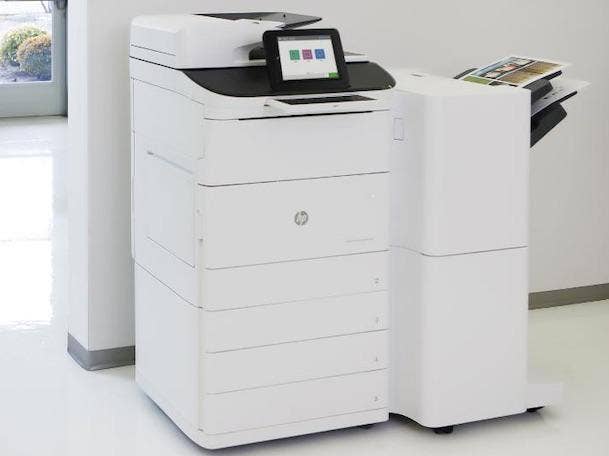Partners: HP's Printer Shift Will Help To Drive Managed Print Services
HP’s plan to overhaul its print business model is another signal that contractual managed print services are the future, partners say.

While some Wall Street analysts have questioned HP Inc.'s plan to change up its longtime print business model, managed print services partners who spoke with CRN say it's the right move for HP at this stage.
HP executives last week disclosed a plan to shift to a model where subsidized printers will only be available if they are "locked" to HP-branded supplies.
[Related: 5 Takeaways From HP’s Massive Restructuring Plan]
The company said it will still offer printers that can use third-party supplies—but those printers will come with a higher price tag than in the past.
The move comes as HP has seen a drop in its supplies business, and is also looking to move more of its business into contractual managed print services.
For HP's partner community, the move is another signal that managed print services—which include HP-branded supplies by default—are unquestionably the future, partners told CRN.
"For us, as a loyal HP partner, I think it's a good thing," said Matthew Schotten, vice president of managed print solutions at Oklahoma City, Okla.-based ImageNet Consulting. "It protects those loyal partners that are selling OEM supplies, and creates a differentiated value and opportunity for them to offer that total value stack."
While HP has a lengthy history of working closely with value-added partners, "the target seems to be moving of what that value is into more of a contractual motion," Schotten said. "HP sees the trends around customers looking for a value-added partner who can do more than just hardware transactions—but can deliver on service, can deliver on software solutions, can deliver on security. So that target seems to be moving in favor of some of those partners that can deliver on those things."
HP has long offered printers at a discount to customers, with the expectation of selling them high-margin supplies for use in those printers.
However, HP has been seeing increased competition from third-party supplies vendors, which has been partly to blame for the downturn in HP's printer supplies business in recent quarters. That's now leading the company to re-evaluate its strategy for both its commercial and consumer print businesses.
HP said it plans to begin phasing out its discounts for printer models that are capable of using non-HP supplies, while retaining the subsidies on models that only work with HP-branded supplies.
"We are challenging the status quo and making bold moves to pivot our transactional business to provide greater choice," said incoming HP CEO Enrique Lores during the company's Securities Analyst Meeting last week.
The forthcoming change will only apply to HP's transactional business—meaning it won't impact contractual managed print services for channel partners.
The change is not rolling out immediately, Lores noted.
"This is not something that's going to happen in one week, it's not happening in one year. It's a multiple-year program," he said.
In tandem with the shift on the transactional model, HP is "accelerating the transition into services," Lores added.
"HP is definitely focused on trying to move their partners and their customers to contractual," said one executive at a partner of HP, who asked to not be identified. "So here's a way that they're saying, 'We're supporting choice,' but they're also saying, 'If you're going to use HP consumables, we're going to create some real benefits for you in terms of a pricing advantage.' So I think there's a desire to help capture contractual recurring revenue."
Channel partners that capture recurring revenue through managed print services are generally “more profitable and important to HP than channel partners who are just moving the box,” the solution provider executive said. "And so here's a way that HP is trying to address all of those things."
Wall Street analysts including Toni Sacconaghi of Bernstein Research have questioned elements of the planned print model shift by HP.
"The business model change is uncertain to succeed, and fraught with risk," Sacconaghi wrote in a note to investors last week. Among the risks is that "competitors will not follow, leaving HP as a relatively high-priced player,” he wrote.
However, HP understands that the transition will “take time” and could include trade-offs in market share and hardware growth in order to “maximize long-term progress," said Tuan Tran, HP's incoming printing business president, during the Securities Analyst Meeting. “We're going to end up with a more balanced systems model.”